Arizona Wild Flowers
Pictures, Photos, Images
Descriptions, Information, Reviews.
Pointleaf Manzanita, Arctostaphylos pungens.
We Are Proud Of Our SafeSurf Rating!
Click On Any Of The Following Links By Amazon.Com
For Books, & Videos About Wildflowers Of Arizona & The Southwest USA. No Obligation!
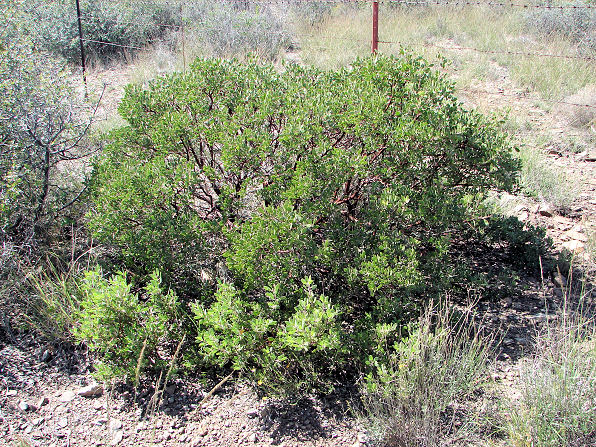 |
| Pointleaf Manzanita, Arctostaphylos pungens. Shrine Road, Yarnell, Arizona September 30, 2006. |
|---|
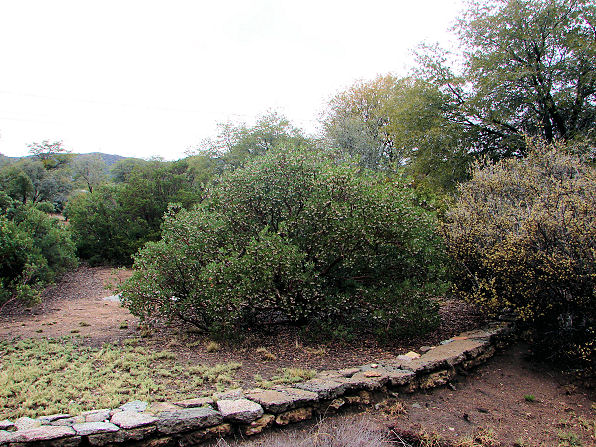 |
| Pointleaf Manzanita, Arctostaphylos pungens. Flowers In Bloom, Yarnell, Arizona March 23, 2007. |
|---|
| Pointleaf Manzanita, Arctostaphylos pungens. Fruit On Bush, Yarnell, Arizona July 24, 2008. |
|---|
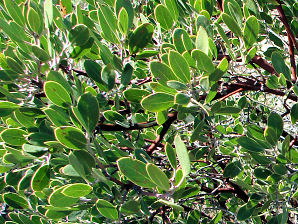 | 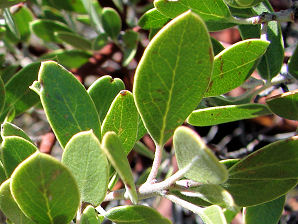 |
| Pointleaf Manzanita Leaves. Arctostaphylos pungens. | Pointleaf Manzanita Leaf. Arctostaphylos pungens. |
|---|---|
 |  |
| Pointleaf Manzanita Red Bark. Arctostaphylos pungens. | Pointleaf Manzanita Flowers. Arctostaphylos pungens. |
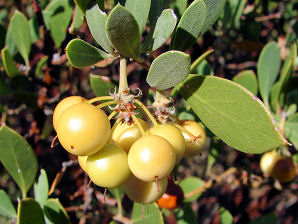 | 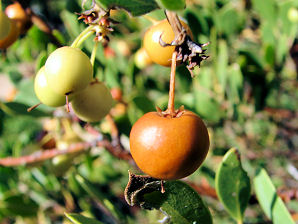 |
| Pointleaf Manzanita Fruit. Arctostaphylos pungens. | Pointleaf Manzanita Ripe Fruit Arctostaphylos pungens |
Pointleaf Manzanita.
We wish to thank Wikipedia, the free encyclopedia for some of the information on this page. We share images and information with Wikipedia. Arctostaphylos pungens, or Pointleaf Manzanita, is a species of manzanita that is native to the Southwestern United States and to northern and central Mexico, where it grows in chaparral and woodland habitats, and on desert ridges. Arctostaphylos pungens is an erect, spreading shrub growing to heights between about three to 10 feet. It has smooth red bark. Its smaller twigs and new leaves are lightly woolly. Mature leaves are leathery, shiny and green, oval to widely lance-shaped, and up to about 2 inches long. The inflorescence is a spherical cluster of urn-shaped manzanita flowers. This shrub thrives in dry, shallow, acidic soils heavy with gravel and sand. But, also does very well in heavy clay soils. The fruit is an apple like drupe 5 to 8 millimeters wide. It is eaten by many birds and wildlife. ( "manzanita" means "small apple" in Spanish ).
It is actually harvested by people and made into a type of jam, in parts of Mexico.
Here Is The Easy Recipe: Makes about 5 Half Pints. ( Given To Us By A Friend In Mexico! )
1/2 gallon Manzanita berries, washed and cleaned.
Directions:
2. Place in cheesecloth and strain. Bring juice back to boil and for each 5 cups of liquid add 4 cups sugar. Boil rapidly until liquid sheets rather than drops off a spoon. 3. Pour into sterilized jars and seal. NOTE: (You can a a drop of green food coloring to brighten up the jelly if desired). Do this before placing the jam into the jars.
Quick Notes:
Height: Up To 10 feet. Spreading 5 - 12 feet.
Flowers: Monoecious; perfect, bell - shaped, 1/4 inch long, pinkish - white, ten to fifteen occurring in a tight grouped, hanging cluster, at the ends of its twigs.
Flowering Time: March - June.
Fruit: A small, berry-like drupe, 1/4 inch round, spotted, brick red in color.
Leaves: Alternate, simple, evergreen, blue green, ovate to elliptical, 1 to 2 inches long, with leathery, entire margins, pointed at the tip, and rounded at the base.
Bark: Distinctive reddish brown, smooth, glossy, attractive, exfoliating bark.
Found: Native to the USA (AZ, CA, NM, NV, TX, UT). Also found south into Mexico to the city of Oaxaca, in the state of Oaxaca.
Hardiness:
Soil pH requirements:
Sun Exposure:
Elevation: 3,500 to 7,000 Feet.
Habitat: In chaparral and woodland habitats, and on desert ridges.
Miscellaneous: Photos Taken at Shrine Road, Yarnell, Arizona September 30, 2006. Flowers On March 23, 2007. Fruit On Bush, Yarnell, Arizona July 24, 2008.
|
We Are Proud Of Our SafeSurf Rating!
Click On Any Of The Following Links By Amazon.Com
For Books, & Videos About Wildlife Of Arizona & The Southwest USA. No Obligation!
| © 1966 - Present, Audrey, Eve, & George DeLange |